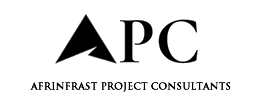
4D planning tools could improve control over costs and schedules for infrastructure – especially road building, writes Dan Ashton, programme and project services
director at Proicere Digital
In the UK, a road-building scheme at an early stage can easily have a cost spread of +20%-30% because of how much is still uncertain before design and approvals are locked in.
One example of a wide cost spread is the upgrade of the Simister Island Interchange that links the M60, M62 and M66 motorways in Greater Manchester, estimated to cost between £207m and £340m.
The high contingency – a £133m spread, equivalent to +/- 24.3% around the midpoint – is consistent with a Class-3 estimate for construction projects where many factors affecting the eventual cost are unknown.
There are indeed many such unknowns at this early stage for Simister Island. Construction and traffic management plans are not yet finalised, so costs of lane closures, diversions and sequences are still rough guesses. Other unknowns include ground conditions, inflation risk and planning requirements.
Additionally, public sector clients such as the Highways Agency are reluctant to declare the most likely estimate, to avoid contractors pricing right up to that figure.
But in light of the government’s recent announcement to invest £24bn in improving the UK’s road network between now and 2030, it’s worth exploring whether estimates can
be tightened. Even a small percentage reduction in estimates could generate 10-figure savings.
Digital construction planning tools can offer stronger support for cost certainty and decision-making – provided they are integrated and rigorously applied from the outset
of a project. Here we see room for improvement.
The conventional understanding is that 4D information management tools provide a time-lapsed visualisation of a construction project, by integrating the 3D model with the schedule.
4D environments as decision-support systems
However, assisted by artificial intelligence, today’s 4D environments act as decision-support systems across the project lifecycle. They help validate constructability, sequence activities without clashes, rehearse traffic management strategies, forecast resource needs and communicate options to stakeholders.
Because these platforms are increasingly linked with cost data, they are not only about planning workflows but also about tightening estimates and improving budget confidence.
In the ideation phase, it can simulate traffic management plans, improving sequencing and resource estimates. The clear visualisation of these plans can also help stakeholders
such as communities, investors and regulators reach decisions more easily. By definition, anything that helps accelerate a construction project reduces risk of overspend.
In the design phase, the 4D model would enable detection of clashes that are invisible in static models or Gantt charts. For road building, these can be between utilities, structures, people, equipment, materials and vehicles. This enables a smooth construction sequence to be determined before works start, avoiding contingencies for costly design changes later on.
Connecting cost data for more accurate estimates
Furthermore, an updatable 4D planning tool that is connected to the cost data, can enable more accurate estimates for materials and operating costs, and tighter budget control through the life of the project.
Also during the design phase, the planning tool calculates exact quantities of materials like steel, asphalt and concrete, avoiding overestimation or shortage risks. Should there be changes to the model later on – for example, if ground surveys reveal the need for extra drainage – cost and quantity forecasts get automatically updated, triggering procurement alerts.
Commercial teams see the financial impact of scope and sequence changes in real time – avoiding wasted worker hours chasing up colleagues for status reports.
Areas of uncertainty
However, there will still be external risks that 4D modelling cannot eliminate at the outset of an infrastructure project. Modelling cannot meaningfully reduce uncertainty relating to land acquisition, legal approvals, cost inflation or unexpected archaeological and environmental findings.
And while 4D tools can provide scenarios for environmental impacts, the actual requirements – such as the need to protect habitats, water courses or air quality – depend on surveys, outcomes and approvals. Likewise, it can model likely impacts caused by extreme weather, and analyse vast data to determine probabilities of occurrence, but
frequency and severity are still unpredictable.
The impact of environmental surveys cannot be underestimated. For example, in the south of the Netherlands, plans to upgrade a 20km stretch of the A2 motorway have been threatened with cancellation, after it was discovered that works would disturb a population of bats, which are protected under EU law. If the project goes ahead, it will likely take up to two years longer to complete than originally expected, in order to comply with bat protection legislation.
4D modelling: the potential for deeper understanding
A 4D model, therefore, will not remove the need for a healthy contingency. But given its capabilities for visualisation, clash detection, accurate cost estimates and scenario testing, it makes significant contributions to avoiding overspend, waste and delay, and gives project managers a clearer understanding of risk probability.
Empowered by this combination of benefits, the project manager is in a stronger position to reduce the spread from a Class-3 cost estimate classification (-20% to +30%) to a
Class-2 (-10% to +20%).
A modest 10% spread reduction could mean a £24m saving in estimates for a new motorway junction. Achieving a similar reduction across the £24bn roadbuilding plan could potentially help the government free up £2.4bn of allocated funds. At a time when budgets are especially tight and under scrutiny, this can only bring cheer, especially to
taxpayers.
The post How could integrated digital planning tools tighten cost estimates in roadbuilding? appeared first on Planning, Building & Construction Today.

